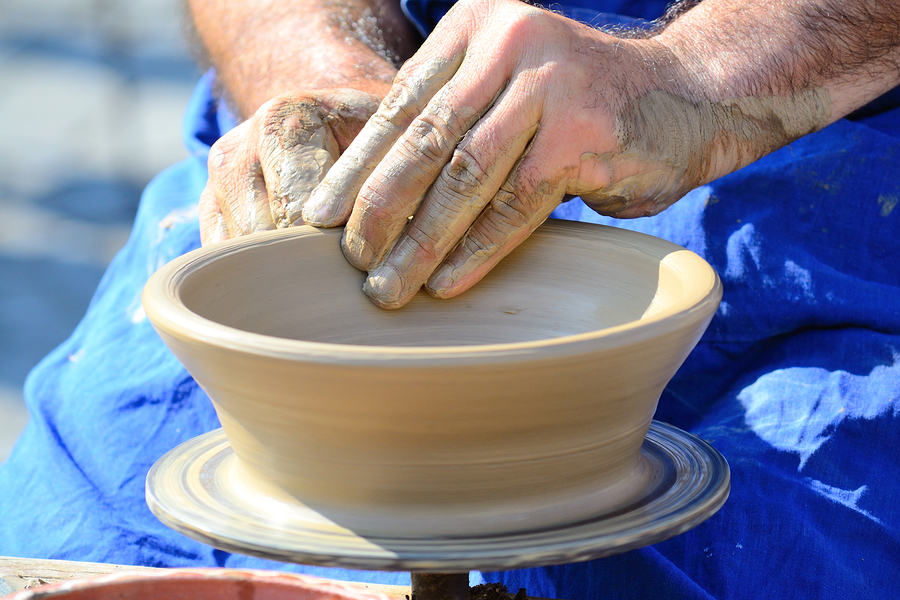Get creative with Pottery
Taking up a hobby is an exciting opportunity to learn something new and when it comes to crafts pottery is one of the most popular pastimes for people who want to roll up their sleeves and get their hands dirty.
It’s a simple and satisfying way to get creative, and even beginners find it easy to create beautiful pieces with a little practice.
Dating as far back as 29,000 BC – the earliest known example of ceramics and pottery in history are the Gravettian figurines found in Europe – pottery has had practical uses for thousands of years. Today it’s still used to make tableware of all kinds and is a favourite with artists around the world to create everything from bespoke vases to large sculptures.
Getting involved
Starting out with pottery isn’t difficult to do, and even if you’ve never tried it before after a little practice you can create bowls, mugs and other simple shapes without difficulty.
There are two basic types of pottery; throwing and handbuilding. Throwing is the most familiar method and involves a potter’s wheel – pieces are shaped while the wheel quickly spins to create a symmetrical piece like a bowl or vase. Handbuilding on the other hand is a little more free form – coils of clay are joined together in layers and shaped by hand into everything from tiles to intricate sculptures.
After pieces are fired they can be decorated using a glaze. The glaze serves two important functions; first, to seal and waterproof an object, and second to decorate and add detail. If decorating pottery and ceramics interests you most there are centres all over the country like Ceramic Café that offer drop in sessions where you can choose a premade piece and paint it as you like.
Many cities offer community classes in throwing and handbuilding and most are affordable and offer discounts for seniors – here you can learn basic techniques with an expert teacher who will suggest pieces to practice with and can offer guidance as you’re working. You can also find private studios that offer more individual lessons – resources like this guide from Kirstie’s Vintage Home offer a good overview of some of the studios offering classes around the UK.
Pottery at home
Once you’re more confident with your pottery skills, it’s also easy to set up your own studio at home. You can purchase the tools you need from ceramic suppliers like Bath Potters and Pottery Crafts.
You can easily do handbuilding at your kitchen table – all you need is a surface to work on, some clay, water and a few tools. Using a potter’s wheel will take up more space – a garage, garden shed, basement or conservatory are all ideal choices when setting up a studio at home. Materials can be expensive so make sure you’re serious before purchasing everything – the best thing to do is build up your collection of tools and glazes slowly over time.
The most expensive purchase you’ll need to make is a kiln to fire your pieces – although it’s possible to purchase small top-loading kilns they still cost thousands of pounds to buy. What many pottery enthusiasts opt to do instead is find a local studio that has the equipment and will fire your pieces for you, usually for a small fee. Before you transport any pieces though you’ll need to wait about a week for them to fully dry and place them carefully – at this stage the clay is still extremely delicate and is prone to cracking or breaking.
Latest posts by Sally - Silversurfer's Editor (see all)
- How to keep your tulips lasting longer - April 25, 2024
- Do you sleep with a snorer? - April 25, 2024
- Holiday hack: How to win a GHA DISCOVERY Titanium status upgrade - April 23, 2024
- 10 Money saving tips for gardeners - April 21, 2024
- Should smacking a child be banned in England and Northern Ireland? - April 17, 2024






















